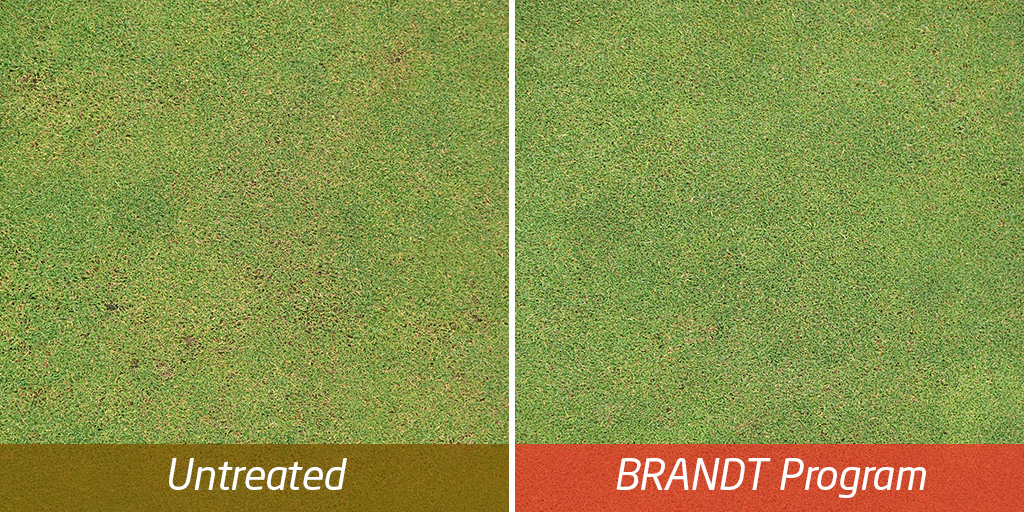Anthracnose Management on Putting Greens
August 19, 2019

2019 Trial – Rutgers University. Brandt nutritional IPM program combined with contact fungicide showing benefits under moderate disease pressure (photo August 7, 2019).
Scouting Notes: BRANDT nutrition and select plant protectants to manage anthracnose (Colletotricum cereale) on an annual bluegrass (Poa annua) putting green.
Golf course superintendents are required to develop a solid nutrition and crop protection program to best manage plant stress and reduce disease severity. The recent hot day/night time temperatures coupled with high dew points has led to breakouts of anthracnose. Infestations can dramatically worsen when plants are under mechanical and/or environmental stress. A balanced nutrient approach works best, with a focus on correct fungicide use and preventative and routine soluble nitrogen (N) and phosphite (H2PO3-) applications.
Nitrogen (N) represents the nutrient required in the greatest quantities by turfgrasses, ranging from 2%-5% in dry leaf tissue. However, soil tests can only be used to determine the level of available (soluble) N at a given time, rather that predict its long-range availability. Frequent and low dose soluble N applications were not always a common turfgrass management cultural practice, but it’s routine now and an important step to reduce anthracnose severity.
